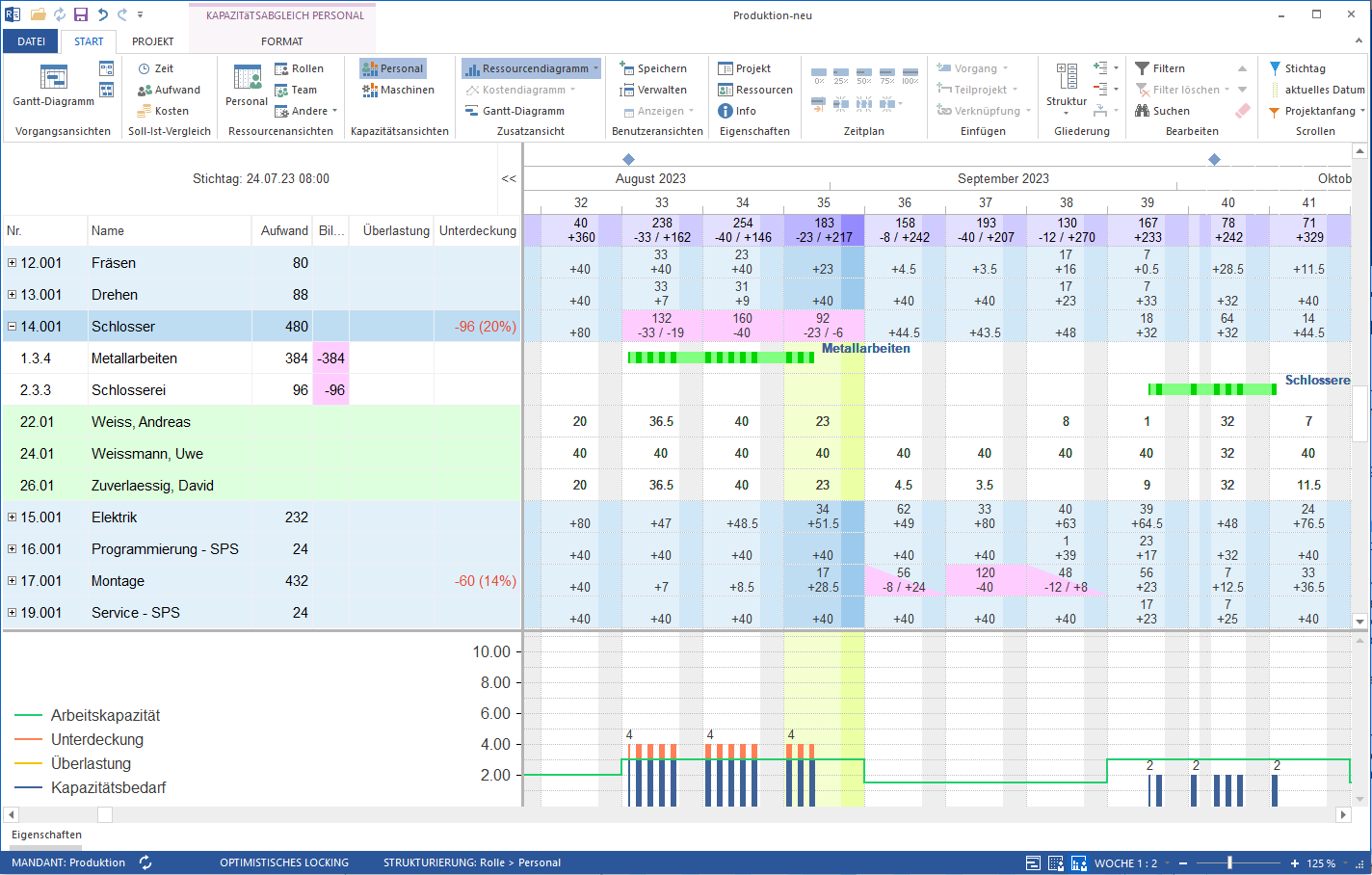Capacity Planning Software
Capacity planning is a crucial aspect of project management. It enables efficient utilization of available resources and ensures that projects are completed on time and within budget. Rillsoft Project is a powerful software that helps project managers plan and manage the capacity of their teams and resources effectively.

Why is Capacity Planning Important?
Capacity planning is the process of ensuring that you have sufficient resources to successfully complete planned tasks and projects. It helps in avoiding bottlenecks, identifying overloads, and optimizing the utilization of your employees and machines. Effective capacity planning leads to improved resource utilization, cost reduction, risk mitigation, and increased chances of successful project completions.
Rillsoft Project Capacity Planning Software
Rillsoft Project is project planning and management software that also offers powerful tools for capacity planning. Here are some key steps and features relevant to capacity planning using Rillsoft Project software:
Define Resources
The first step is to define all the resources needed for your project. These resources can be employees, machines, materials, or other assets. Rillsoft Project’s capacity management software allows you to store detailed information about each resource, including their skills, availability, and costs.
Resource supply refers to the quantity and availability of resources in an IT environment, especially concerning hardware, software, and human resources. It involves the precise determination of available capacities to support IT systems and processes. Assessing resource provisioning is critical to ensure that the IT infrastructure is appropriately sized to meet the company’s needs.
Assign Tasks
Assign tasks to the appropriate resources. This can be done manually or using Rillsoft Project’s assignment features. The capacity planning software automatically takes resource availability into account and highlights overloads or bottlenecks.
Resource demand refers to the requirements and consumption of resources within an IT system. This includes both hardware and software requirements as well as the need for labor. Accurately determining resource demand is crucial to ensure that available resources are sufficient to support the smooth operation of IT systems.
Create a Schedule
Create a schedule for your project by defining task dependencies, durations, and start and end dates. Rillsoft Project, as capacity utilization software, automatically calculates the schedule based on your input and resource availability.
Capacity balancing is the process of aligning resource availability with resource demand. The goal is to ensure that the available resources are sufficient to meet the company’s requirements. This alignment allows for identifying bottlenecks and taking capacity optimization measures as necessary.
Identify Resource Bottlenecks and Free Resource Capacities
Identifying resource bottlenecks refers to situations where the available resources are not sufficient to meet the demand. Recognizing resource bottlenecks is a critical step in capacity planning. It enables timely action to avoid or address bottlenecks before they impact business operations.
Free resource capacities refer to unused or available resources within an IT system or organization. Identifying and efficiently utilizing free resource capacities can contribute to optimizing the IT infrastructure and avoiding additional investments.
Monitoring and Adjustment
Capacity planning is an ongoing process. Track the progress of your project in Rillsoft Project and adjust the schedule and resource allocations as needed. The capacity planning application software allows you to create “what-if” scenarios to test different planning options.
Reports and Analysis
Rillsoft Project Capacity Planning Software provides a variety of reports and analysis views to monitor resource utilization. You can create detailed reports on resource availability, bottlenecks, and costs to make informed decisions.
Location-based resource planning in Rillsoft Project is an approach in capacity planning that takes into account the geographical distribution of resources. It aims to ensure that resources are available at the right locations to meet local needs. This is especially important in global organizations where different locations may have varying requirements and capacities.
Advantages of the capacity planning software Rillsoft Project
Using Rillsoft Project Capacity Planning Software offers several advantages:
Efficient Resource Utilization: The software helps optimize resource allocation and prevent bottlenecks.
Real-time Monitoring: You can track project progress in real time and respond to changes immediately.
Better Budget and Cost Control: Precise resource planning and monitoring allow more efficient budget management.
Risk Mitigation: Identifying bottlenecks and overloads enables early detection of risks and the implementation of countermeasures.
Informed Decision-Making: Rillsoft Project’s extensive reporting capabilities provide data and insights to support well-informed decisions.
The capacity planning software solution is crucial for project success, and Rillsoft Project is a powerful tool to efficiently handle this task. With the proper use of Rillsoft Project, you can ensure that your projects are completed on time, resources are optimally utilized, and your budget remains under control. It is an investment that pays off in the form of successful projects and increased efficiency.
FAQ
How does Rillsoft's Capacity Planning Software facilitate matching identified resource demand with available resources?
Rillsoft's capacity management software enables matching identified resource demand with available resources in the following ways:
- Resource demand is determined based on the effort required for each task and the assigned roles or qualifications.
- Available resources are identified from a resource pool that contains information about available employees and their qualifications.
- When matching resource demand with available resources, the software takes into account the qualifications of employees. This means that tasks are assigned to employees with the appropriate skills to ensure quality and efficiency.
- The software also considers employee vacation schedules to ensure that projects are not disrupted by absences.
- Project priorities and locations are also taken into account to ensure that the most suitable resources are assigned to critical tasks and geographical constraints are considered.
Through this matching process, companies can ensure that the right resources are deployed for the right tasks at the right time, leading to optimized project execution.
